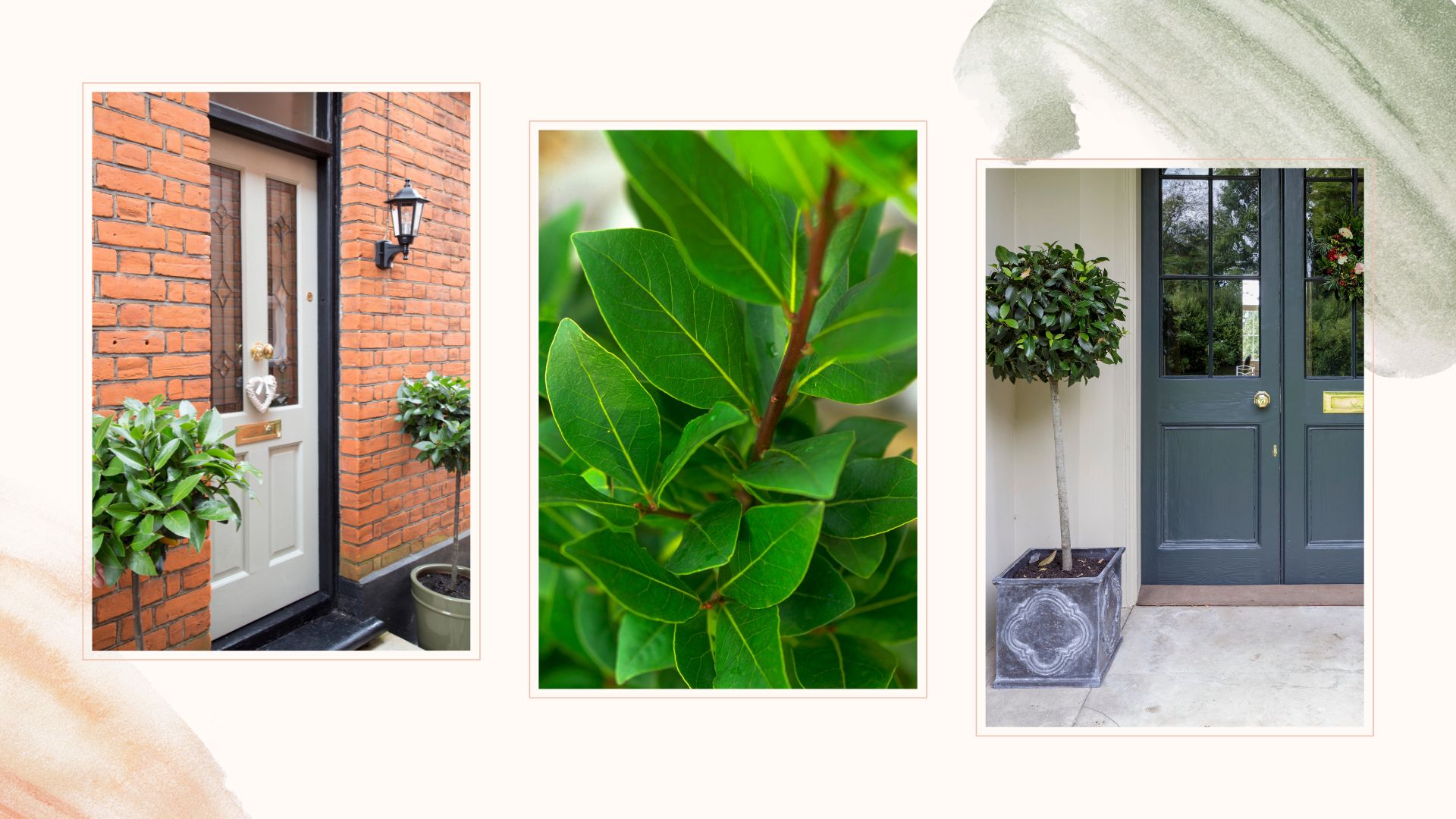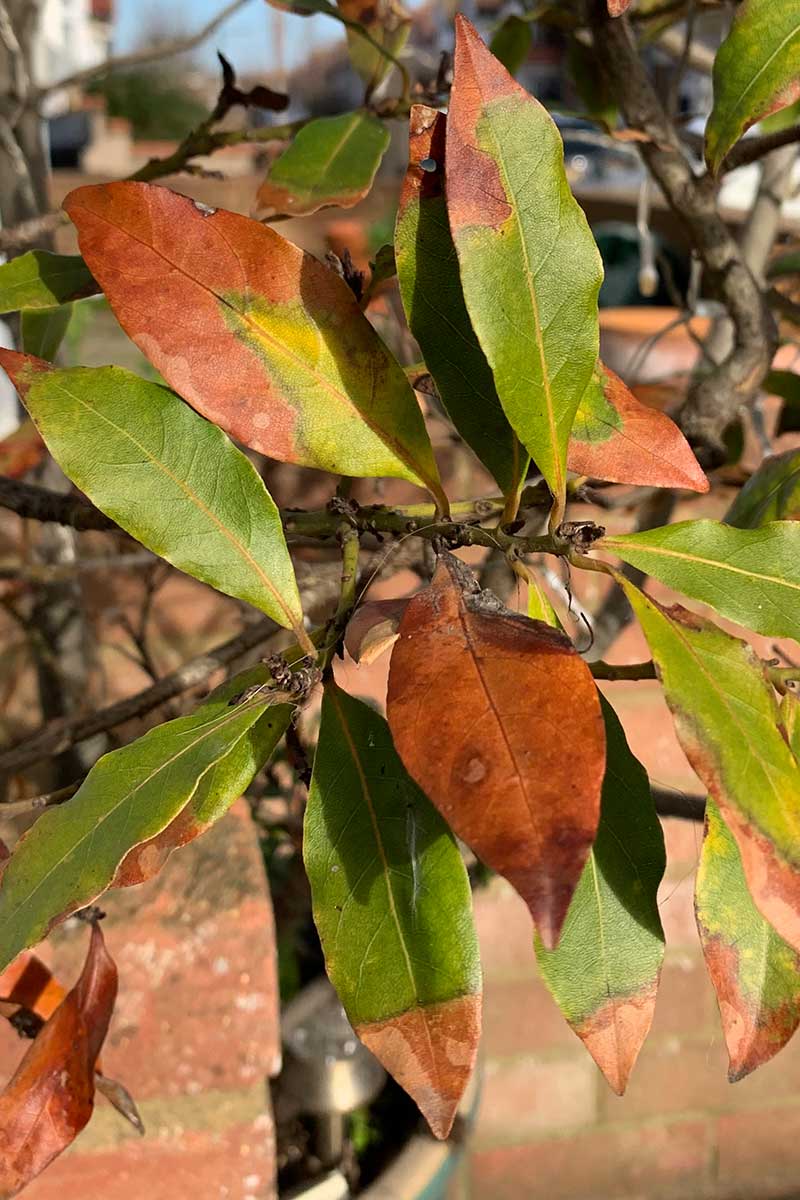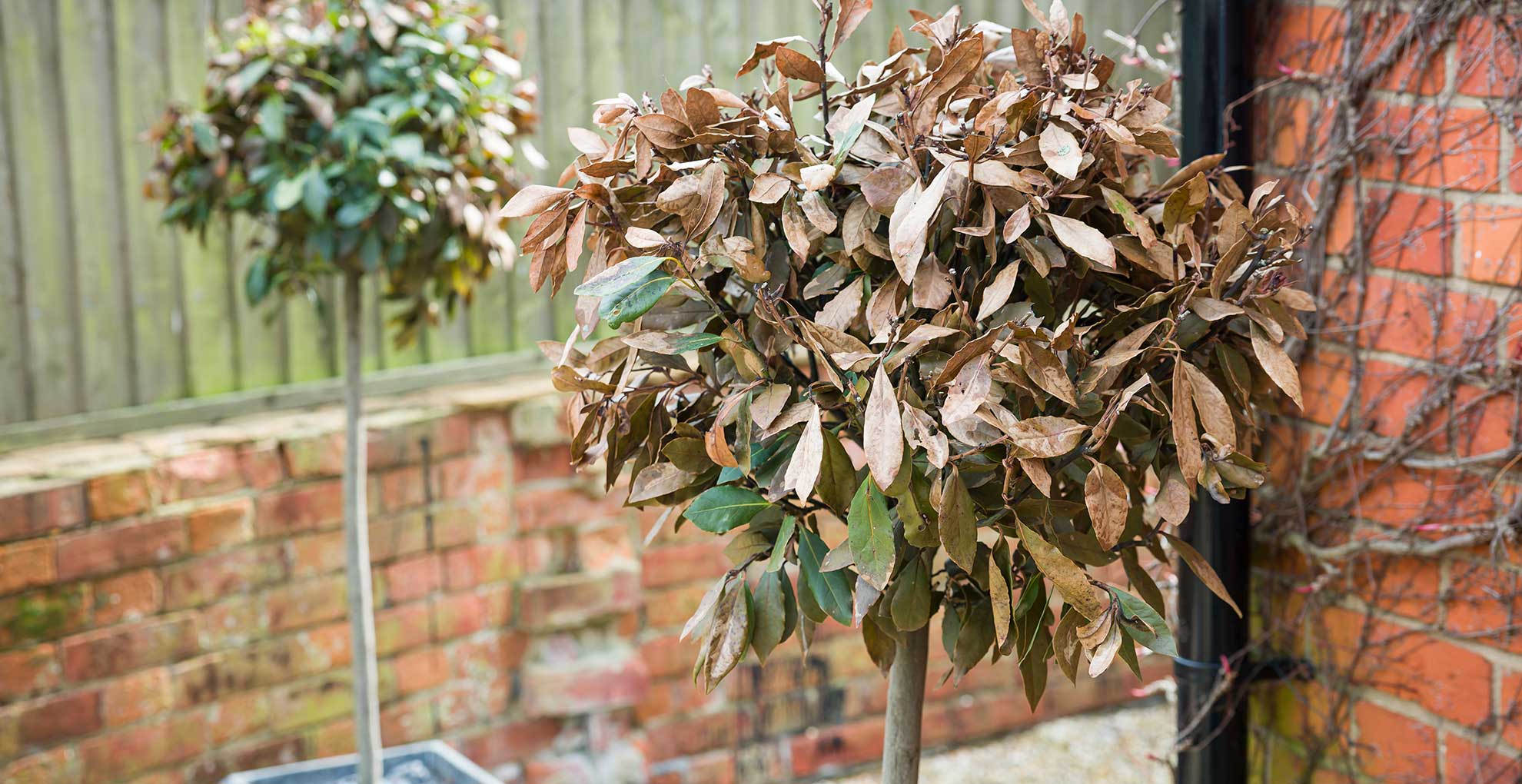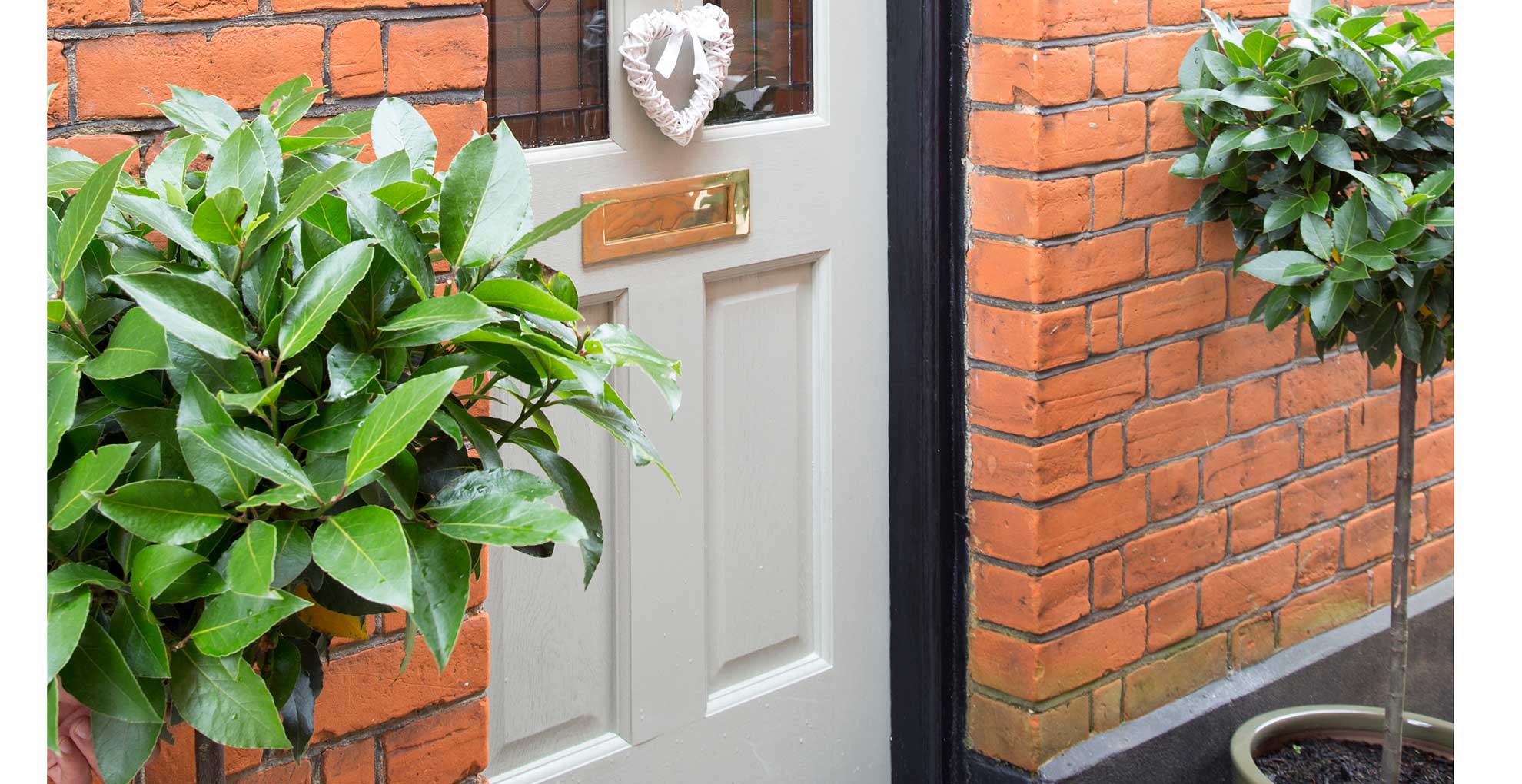
Why are my bay tree leaves turning brown? Yes, the weather has been somewhat unpredictable in recent weeks but this hardy evergreen has never been anything but resilient – it must be something I'm doing wrong. All in a panic, I turned to my team of horticultural experts to seek their advice in the hope it could be saved.
Spoiler alert, they assure me it can. It turns out there are numerous reasons why you may start to experience brown bay tree leaves. Particularly at this time of the year when harsh weather conditions can play havoc with our best plants and general garden maintenance, such as knowing what plants to prune in February due to frosts or timing when to first cut the grass after winter.
So how can I nurse my beloved 'Laurus nobilis' bay tree back to health to display nothing but luscious green foliage once more? Our team of experts share their advice on what could be causing the leaves to turn brown and how to put it right.
Why are my bay tree leaves brown?
“Brown leaves can be alarming to see on any plant, but especially on a bay tree, whose normal glossy dark green leaves are a signature," says Craig Wilson, Co-founder & in-house gardening expert at Gardeners Dream. "However, browning leaves is one of the most common signs that your bay tree has a problem, luckily it could be an easy fix.”
Below are the possible causes and remedies to restore your brown bay leaves back to good health.
1. Lack of water
"The most probable cause of browning leaves is lack of water," explains professional gardener Sarah Kay. "Check the soil surrounding the tree and if it is very dry give it a good soak. It may be that it is in a rain shadow spot and isn’t getting rain."
If your tree is not naturally benefitting from rainfall for easy watering you are best to think about relocating it to a new spot in the garden.
"Whether your bay tree is grown in the ground or a pot, bay trees will become stressed and develop brown leaves if they can’t access the water they need,” explains Craig.
“If you are finding your soil is dry when you dig down near the tree’s roots you can easily solve the problem by making sure your bay tree has sufficient water. But, be careful not to overwater your bay tree, as this can be just as harmful and result in yellow leaves, which can often be an even trickier problem to fix.”

2. Waterlogged soil
On the other end of the scale, brown or yellowing leaves on a bay tree can be caused by improper drainage where the soil becomes waterlogged – due to heavy rainfall.
"A common problem with bay trees grown in containers is waterlogged soil," says Holly Crossley, w&h's resident garden expert, "particularly in winter after frequent spells of cold and rainy weather. These drought-tolerant plants hail from hot and dry Mediterranean climes, and if they’re sat in soggy soil for too long, their roots can rot."
Holly explains: "To avoid this from happening, it’s essential to use a well-draining potting mix when planting and ensure your containers have drainage holes. Lifting the pots onto pot feet can also help."
I know my bay tree is in a well-draining pot, so it was easy to rule this cause out. To check your bay tree a simple soil touch-test will soon tell you if the drainage is insufficient.
3. Temperature extremes
Who knows what the weather is doing these days, one minute it's balmy and mild for the time of year the next it's blowing a gale and raining unprecedented amounts. This extreme change in temperature can cause bay tree leaves to turn brown.
"The tree may have got frosted during the extended cold period we had last month," says Marlene Lento, a professional garden designer who specialises in sustainable gardening ideas.
"Bays are usually ok to around -5 degrees C, but combined with wind or damp and over a longer period, they can be affected. If a little frost is the cause, the tree should recover in spring and new growth should show then."
If you suspect this might be the cause it's worth nothing our expert tips to protect plants from frost and cold conditions so you're better prepared next time.
"I would definitely keep some horticultural fleece at hand, in case we get another cold snap and wrap it up on cold nights," adds Marlene helpfully.

4. Pests
Unwelcome garden pests can be a real nuisance, be it an ants nest in your lawn or caterpillars eating their way through your crop after growing vegetables. It also turns out that could well be a contributing factor for turning bay leaves brown.
"Scaly insects take advantage of stressed trees," warns Marlene "so you could have that in addition to any of the above causes."
Look for signs of insects and act accordingly to remove them as humanely as possible, to prevent them from doing more damage to the brown leaves.

How do you treat brown leaves on a bay tree?
Similar to keeping a Christmas tree alive for longer, the answer could be as simple as a sugar fix. "One interesting tip for stressed trees is giving them a little sugar in their water as this means the leaves won't have to produce it and it can go straight to the roots," suggests Marlene.
"One tablespoon for a large watering can is about the right proportion of sugar to water. I dissolve the sugar in a bit of warm water before adding it to the can."
When asked if a standard plant feed or liquid fertilizer was recommended Marlene replied: "I usually only feed during the growing season, especially with container plants. I think the sugar water should do for now."
"If the tree is in a container maybe try moving it to the sunniest spot you have- although I know that's mostly unrealistic because of weight.
Oh, and maybe hold off pruning in the spring, even if you're tempted to cut off the old foliage."
I've had my bay tree for over 10 years, having been lucky enough to rehome it after it made an appearance at the RHS Chelsea Flower Show during my time working on the team at Country Homes & Interiors magazine. I have proudly displayed the potted shrub out the front of my house ever since and have never experienced brown leaves before now.
Needless to say, I've become quite attached to it and making it my mission to turn those leaves green once more. I'll report back in due course.







